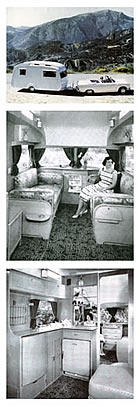1940’s
Wartime Britain witnessed austerity measures in all aspects of everyday life. Carlight respected the nation’s attitude and, in preference to a brochure, instead published an “Emergency War List” – a typewritten, hand-illustrated list of models. Any customer wishing to view the caravans in greater detail could ask to be shown a set of stock photographs.
Times were lean, as WR Earl, Director at Carlight writes:
“At present we are just able to keep up supplies to meet our requirements. Customers can be assured that should any material become unavailable a substitute of equal merit will be employed, quality and durability will not be allowed to suffer.”
If unobtainable, the chrome used to frame Carlight windows was replaced with wood. He goes on to say:
“..there is no better method of Air Raid Protection than a caravan, giving also the means of a holiday which all will need. Another point for early buying if air raids start – caravans will be almost unobtainable so great will be the demand.”
The new Carlight Conqueror – a fitting name for the model – came with either a plain or lantern-topped roof. The interior was spacious and fitted out to the highest Carlight specifications: lino and carpet flooring, gas oven, gas and electric lights, sprung mattresses and a full set of crockery and cutlery. The Conqueror, at 16ft, complemented the existing 21ft Commander and 17ft Colonial Minor, all with similar outward appearances and all finished to the same, high standards.
An all-season caravan, the Conqueror was aimed at the purchaser “who does not wish to pay over £300 and has a limited car horsepower at his disposal”. The minimum recommended horsepower for towing the Conqueror was 14. Compare that with today’s typical towcar, at an average of 100 horsepower!
Mr Earl ends the list on an optimistic note:
“We sincerely hope that by new year your caravans, now used for safety, will again be used for the sheer enjoyment of a free life.”

